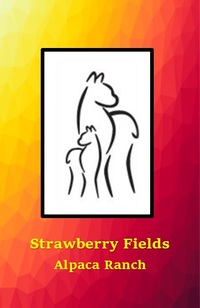About Alpacas
Alpacas, Vicuna, are a domesticated species of the South American camelids. They resemble a
small llama in a superficial appearance.
Huacaya Alpaca:
There are two types of Alpacas the Huacaya and the Suri. Alpacas graze on the level heights of the
Andes of Ecuador, southern Peru, northern Bolivia, and northern Chile at an altitude of 3500 to 5000 meters above sea-level, throughout the year. They are considerably smaller than llamas, and unlike llamas, they are not used as beasts of burden but are highly valued only for their fine fleece.
Alpaca fleece is used for making knitted, felted and woven items, much like sheep’s wool. These items include blankets, sweaters, hats, gloves, scarves, a wide variety of textiles and ponchos in South America, and sweaters, socks, coats and bedding in other parts of the world. The fleece comes in more than 52 natural colors as classified in Peru, 12 as classified in Australia and 22 as classified in America. Alpacas and llamas differ in that alpacas have straight ears and llamas have banana shaped ears.
Aside from these differences, llamas are on average 1-2 feet taller and proportionally bigger than alpacas. In the textile industry, “alpaca” primarily refers to the fleece of the Peruvian alpaca, but more broadly it refers to a style of fabric originally made from alpaca fleece but now often made from similar fibers, such as mohair, Icelandic sheep wool, or even high-quality English wool In trade, distinctions are made between alpacas and the several styles of mohair and luster.
Suri Alpaca:
Alpacas have been domesticated for thousands of years. In fact, the Moche people of Northern Peru
often used Alpaca images in their art. There are no wild alpacas. The closest living species are the wild Vicuña, also native to South America. Along with camels and llamas, the Alpaca are classified as camelids. Larger than the wild Vicuña, the Alpaca is smaller than the other camelid species.
Of the various camelid species, Alpacas and Vicuna are the most valuable fiber-bearing animals: the
alpaca because of the quality and quantity of its fiber, and the vicuña because of the softness, fineness and quality of its coat. Alpacas are too small to be used as pack animals. Instead, they were bred exclusively for their fiber.
Since 1984 alpacas have flourished on farms and ranches all throughout the United Sates and Canada because they are so adaptable. There are two different kinds of alpacas in the United States–the Suri alpaca which has fiber that appears to be in the form of dreadlocks and is very silky, and the Huacaya (pronounced wa-kai-a) alpaca which has very colorful fiber that is extremely fine and gives the alpaca a woolly and round appearance. In 2014 there are over 250,000 registered alpacas in America. There are currently over 5500 alpaca ranches in America.
Sunday, January 28, 2024
